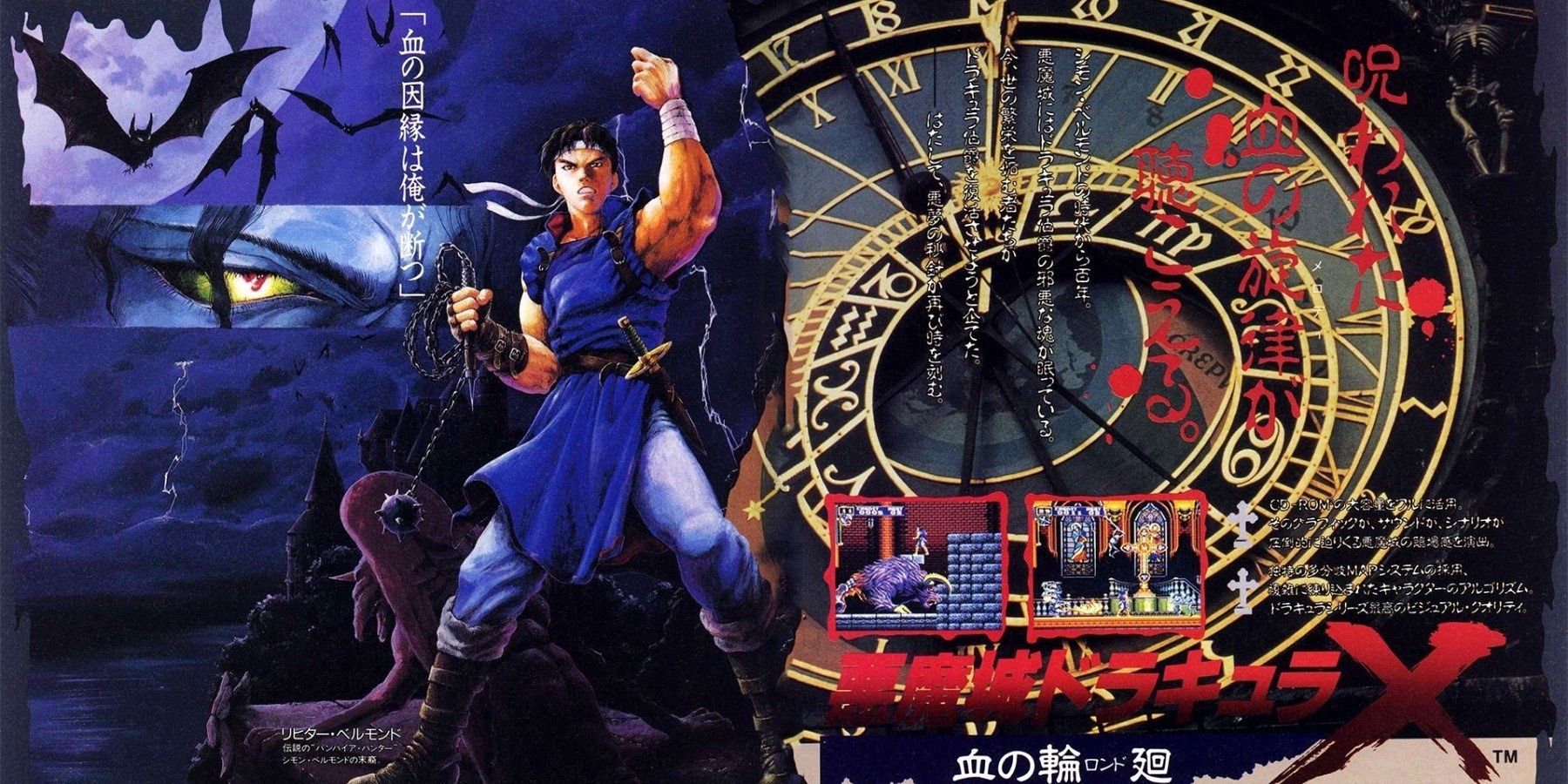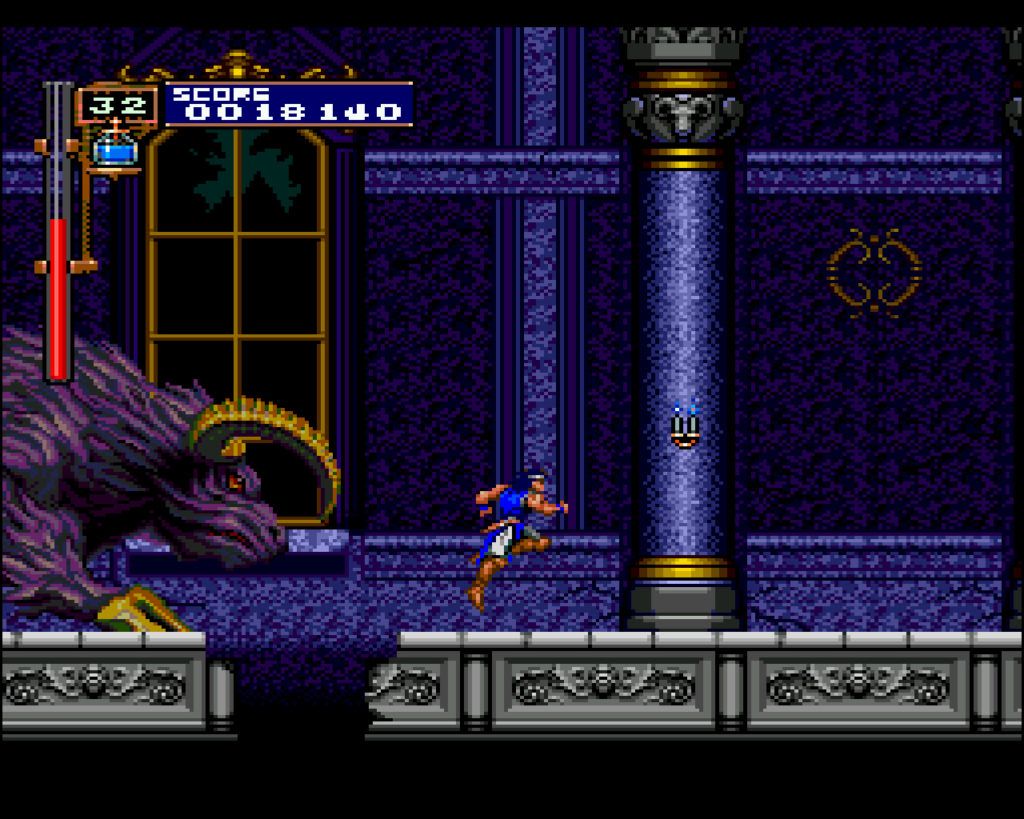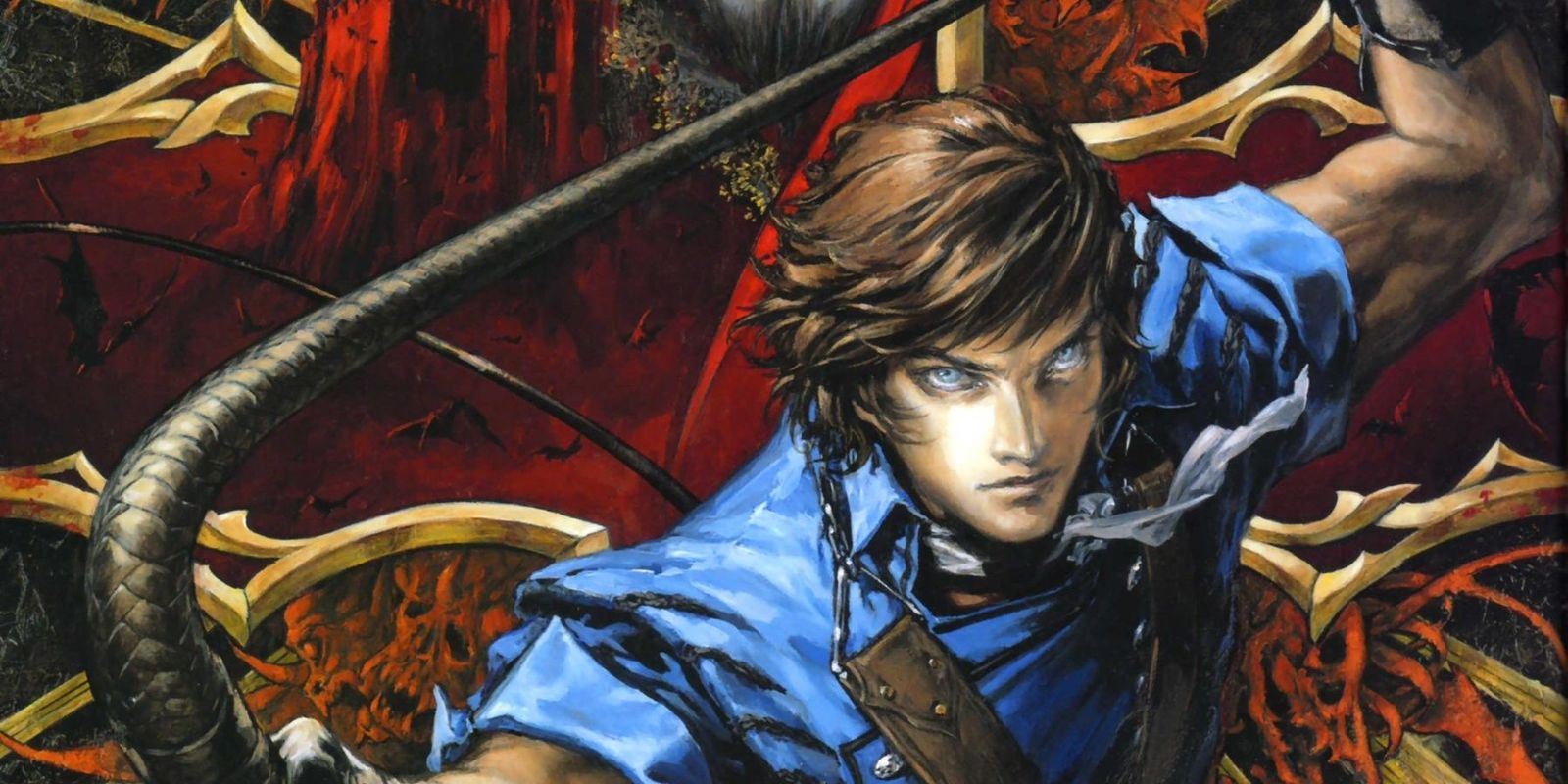Konami's Castlevania franchise has been a staple on home and handheld consoles, with many of its titles initially released in Japan receiving a North American release within a calendar year. For the most part, these international releases are simply translations with minimal changes to the actual design and gameplay apart. However, one title in the long-running series didn't receive an official American release until 14 years after its Japanese debut despite being regarded as one of the best installments in the entire series: 1993's Castlevania: Rondo of Blood for the TurboGrax-16/PC Engine.
Set in 1792, Rondo of Blood follows Richter Belmont, the latest vampire hunter in his family to inherit the legendary Vampire Killer whip just in time for Dracula's resurrection. As dark forces sweep across Transylvania, Richter's girlfriend, Annette, is kidnapped along with three other young women from the village, including Maria Renard.
The game's progression features divergent paths with alternate levels and bosses, plus the ability to play through the game as Maria after rescuing her. This helped Rondo of Blood stand out from 1991's Super Castlevania IV on the Super Nintendo. The game was released by Konami as a tile linked to the CD drive add-on to the TurboGrafx, taking advantage of the hardware's improved graphical and audio capabilities over the SNES and Sega Genesis/MegaDrive.
While the TurboGrafx was successful in Japan, overtaking Sega as Nintendo's primary competitor during the SNES era, the home console failed to build a fanbase in North America and Europe. Due to the small overseas market, the library of games localized for the United States was slim. Third-party developers in particular were not interested in spending the money to localize games that may not find a market. Given the disparity between the TurboGrafx's CD add-on capabilities and the 16-bit SNES cartridges, Konami decided to rework Rondo of Blood entirely for foreign markets.
Two years later, Rondo of Blood was released by Konami on the SNES in North America as Castlevania: Dracula X and in Europe as Castlevania: Vampire's Kiss. While these retained the overall premise and many assets from Rondo of Blood, each of the game's levels were completely redesigned, and many of the alternate stages were omitted entirely.
The number of maidens to be rescued was reduced from four to two, with Maria no longer available as a playable character. Additionally, Richter himself moved slower and less intuitively than he had in Rondo of Blood. Due to the drastic changes and reduced features, many critics regard Dracula X/Vampire's Kiss as an inferior version of the game though it does have its fair share of dedicated fans.
While Rondo of Blood's original ending would be used in the subsequent installment, 1997's Symphony of the Night on the original PlayStation, this version of the game remained unreleased in the United States until 2007. It received an enhanced remake on the PlayStation Portable as an unlockable extra that could be discovered in Castlevania: Dracula X Chronicles.
The game wouldn't receive a standalone release in North America until 2008 on the Wii Virtual Console -- and only in its original Japanese-language iteration. An English localization would finally be made available in 2018's Castlevania Requiem compilation on the PlayStation 4, where it could (again) be found in Dracula X Chronicles. For those looking for the most authentic Rondo of Blood experience (short of buying the original CD add-on and disc), the Japanese-language version is included with the TurboGrafx-16 Mini.
Despite its acclaim, market viability and hardware limitations made the true version of Rondo of Blood unavailable in the United States for over a decade following its Japanese release. The game has since enjoyed a proper launch in North America, bringing the adventures of Richter Belmont and Maria Renard to a new generation of gamers and proving to be well worth the wait.



